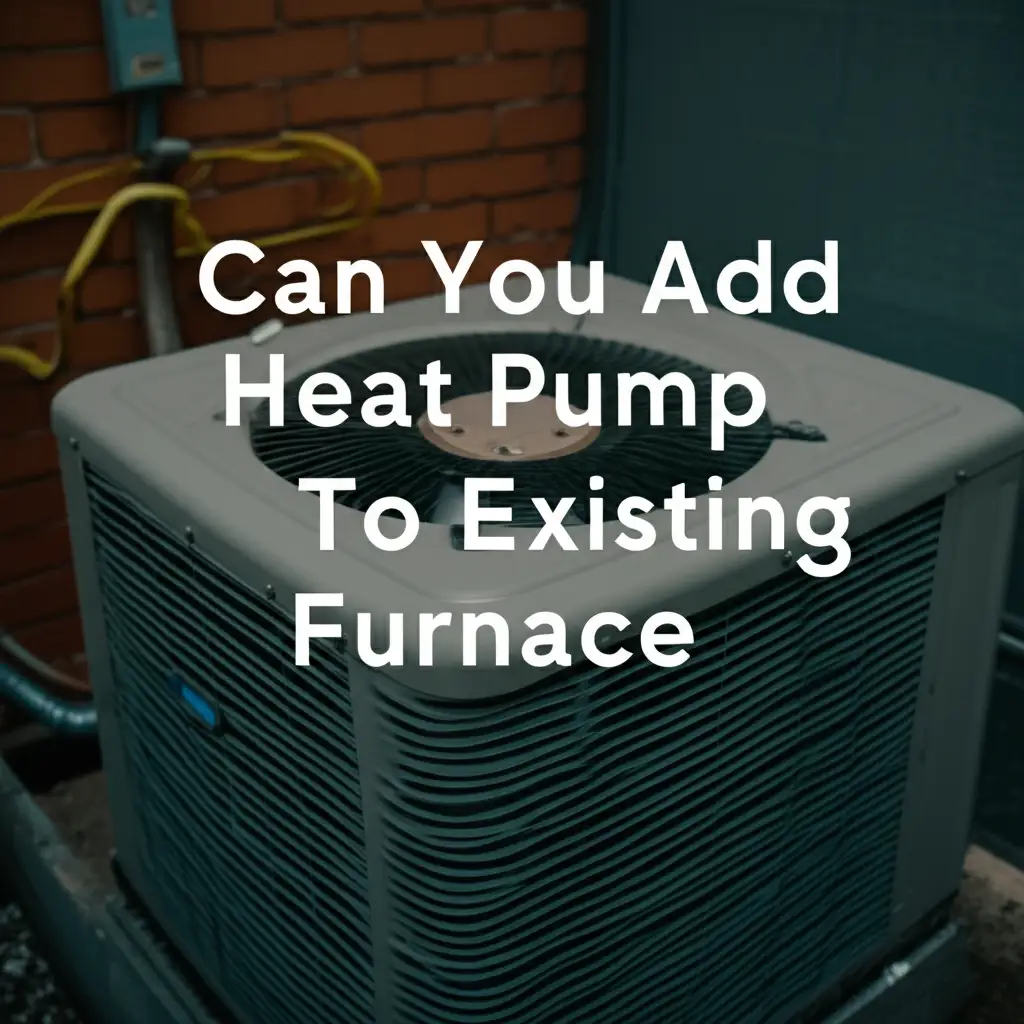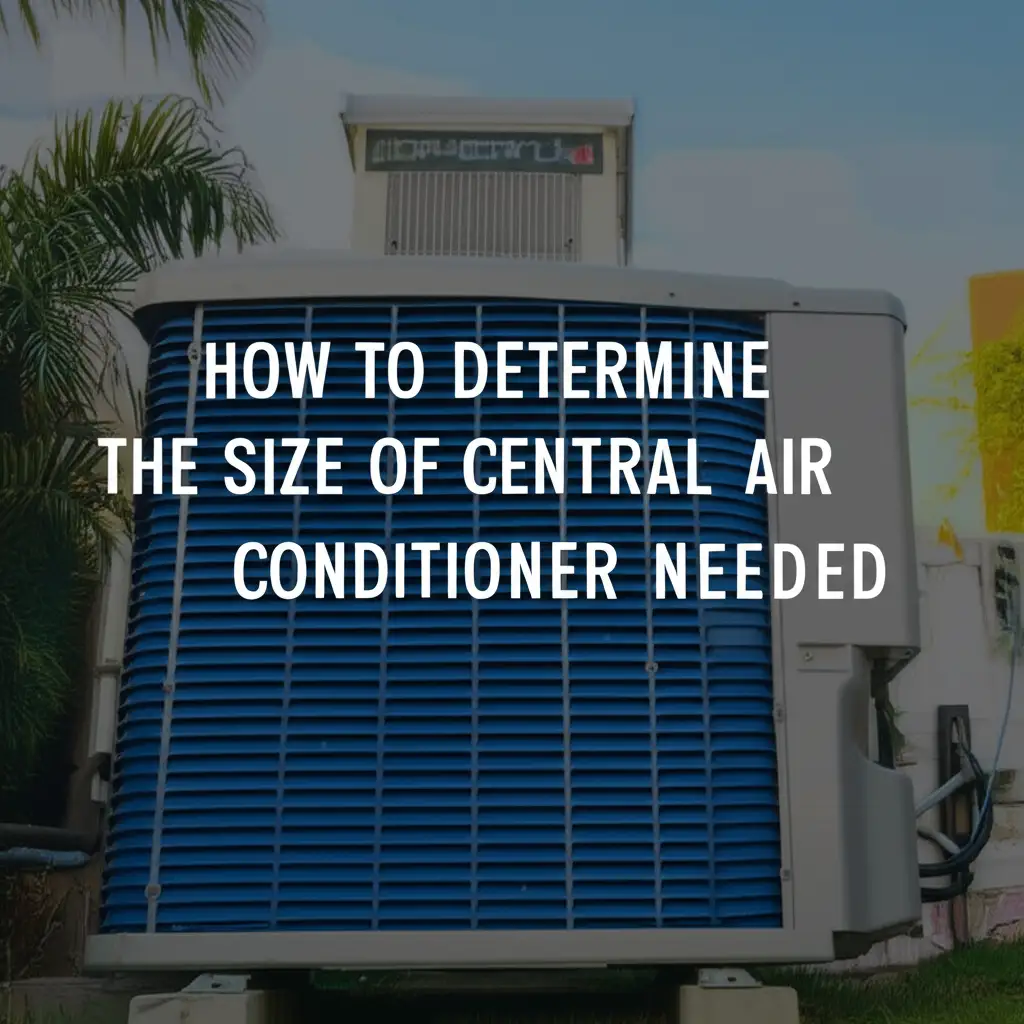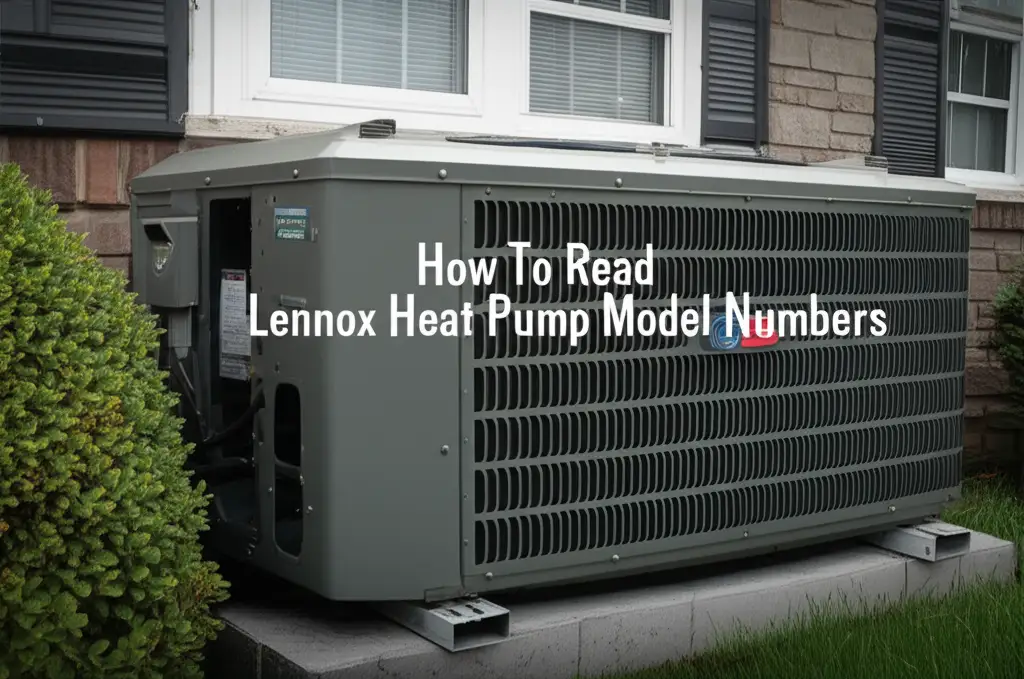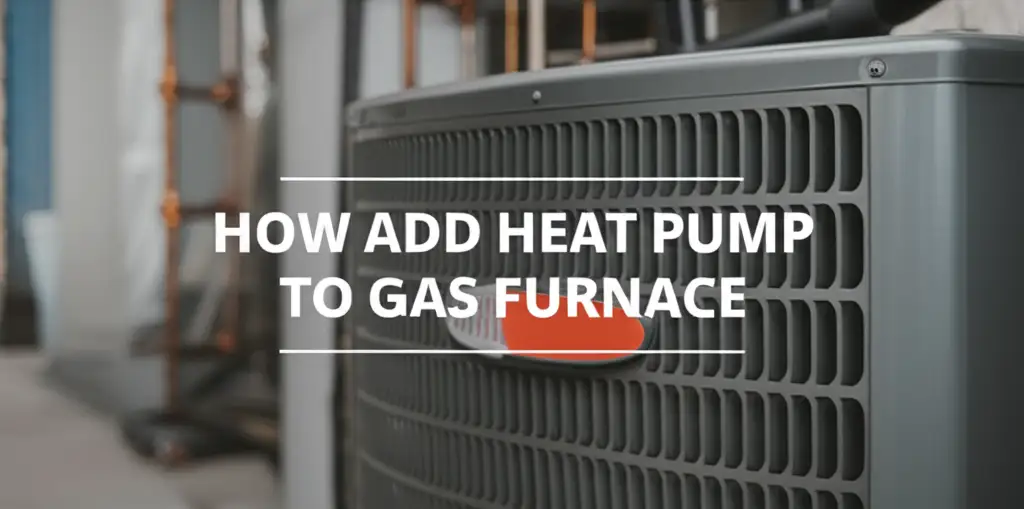· Todd Martin · HVAC · 11 min read
Can You Add Heat Pump To Existing Furnace

Can You Add Heat Pump To Existing Furnace
Thinking about boosting your home’s heating and cooling system? You are not alone. Many homeowners consider upgrades to improve comfort and save money. A common question arises: “Can you add a heat pump to existing furnace?” This setup creates a hybrid system, combining the best of both worlds. I believe this option offers significant advantages for efficiency and comfort. This article will explain how combining a heat pump with your current furnace works. We will cover the benefits, what factors affect installation, and how to maintain this powerful duo.
Takeaway
Adding a heat pump to your existing furnace creates a highly efficient “dual-fuel” system.
- This setup saves energy and lowers utility bills.
- It provides comfortable heating and cooling year-round.
- Proper system compatibility and professional installation are crucial for success.
Yes, you can absolutely add a heat pump to an existing furnace. This creates a “dual-fuel” or “hybrid” HVAC system. The heat pump handles most of your heating and all cooling. Your furnace acts as a backup for very cold days, ensuring optimal comfort and energy efficiency.
Understanding Dual-Fuel Systems: The Hybrid Approach
A dual-fuel system is smart. It pairs an electric heat pump with a traditional gas, oil, or propane furnace. The heat pump works as your primary heating source for most of the year. It uses electricity to move heat, rather than create it. This makes it very efficient.
When outside temperatures drop very low, the heat pump becomes less efficient. This is where your furnace steps in. The system automatically switches to the furnace for supplemental heat. This ensures your home stays warm even in freezing conditions. It optimizes energy use by always choosing the most cost-effective heating method.
This combination gives you reliable comfort and lower energy bills. You get the efficiency of a heat pump with the powerful backup of a furnace. It is a win-win for home comfort and your wallet. This setup is a modern solution for heating and cooling.
Benefits of Combining a Heat Pump with Your Furnace
Adding a heat pump to your furnace brings many benefits. First, you get significant energy savings. Heat pumps are incredibly efficient at heating and cooling. They move existing heat instead of burning fuel. This means lower monthly utility bills for you. This is a major reason why many people consider this upgrade.
Secondly, comfort improves greatly. Heat pumps provide consistent, even heat. They do not have the on-and-off blasts of a furnace. This creates a more stable indoor temperature. Plus, a heat pump also provides cooling in summer. This gives you one system for year-round climate control.
Third, you reduce your carbon footprint. Heat pumps use less fossil fuel than furnaces alone. This makes your home more environmentally friendly. It is a step towards cleaner energy. Lastly, adding an energy-efficient heat pump can increase your home’s value. Buyers appreciate modern, efficient HVAC systems. Curious about the cost savings? You might find a heat pump is cheaper to run than an electric furnace, leading to notable savings over time. Is Heat Pump Cheaper to Run Than Electric Furnace
Investing in a dual-fuel system means a warmer winter, cooler summer, and more money in your pocket. It is a wise choice for the future. Also, considering how a heat pump can add value to your house is important. Does Air Source Heat Pump Add Value to Your House
Key Compatibility Considerations for Heat Pump Integration
Before you add a heat pump, check a few things. Not every existing furnace is ready for a heat pump. Compatibility is important for a smooth operation. It avoids future problems and ensures efficiency.
- Furnace Type: Your furnace must be a forced-air system. This means it uses ductwork to distribute air. Most modern furnaces are. If you have an older, gravity-fed system, it may need ductwork upgrades.
- Ductwork Condition: Your existing ductwork must be in good shape. It should handle the airflow requirements of both units. Leaky or undersized ducts reduce efficiency. They can also strain the heat pump. A professional HVAC technician can inspect your ducts. They can recommend repairs or replacements.
- Electrical Capacity: Heat pumps need a dedicated electrical circuit. Your home’s electrical panel must have enough capacity. Older homes might need an electrical service upgrade. This ensures safe and reliable operation.
- Thermostat: You will need a dual-fuel capable thermostat. This smart device manages the switch between the heat pump and furnace. It senses outdoor temperatures. Then it automatically selects the most efficient heating source. This ensures you are always comfortable and saving energy.
- Furnace Age and Condition: If your furnace is very old, consider replacing it too. Installing a new heat pump with a failing furnace is not cost-effective. A new, high-efficiency furnace will complement the heat pump better. This creates a truly optimized dual-fuel system.
A professional assessment is always the best first step. They can check your current setup. They ensure everything works together perfectly.
The Installation Process: What to Expect
Adding a heat pump to your existing furnace involves several steps. It is not a DIY project. You need certified HVAC technicians. They ensure everything is installed correctly and safely. I would always recommend choosing a reputable company for this work.
First, the technician assesses your home. They check your furnace, ductwork, and electrical system. They calculate the correct size heat pump for your home. Proper sizing is important for efficiency. An undersized heat pump will struggle to heat or cool your home. An oversized one will cycle too often.
Next, the outdoor unit (condenser) is placed outside. Refrigerant lines connect it to the indoor coil. This coil is installed above your furnace. It works with your existing blower fan. The electrical connections are then made. A new dual-fuel thermostat is installed. It manages the whole system. The technicians will test the system thoroughly. They make sure both the heat pump and furnace work together. They also check for proper airflow and refrigerant levels. For more details on how this process works, you can read about adding a heat pump to a gas furnace. How to Add Heat Pump to Gas Furnace
The process can take one to two days. This depends on the system’s complexity. Once finished, you will have a powerful, efficient heating and cooling system.
Operational Aspects and Smart Control
Once installed, your hybrid system runs mostly on its own. The smart thermostat is the brain of the operation. It constantly monitors the outdoor temperature. You set a “balance point” temperature. This is the temperature at which the system switches. For example, you might set it to 35°F.
When the outdoor temperature is above 35°F, the heat pump handles heating. It is very efficient in these conditions. If the temperature drops below 35°F, the thermostat signals the furnace to take over. The furnace provides powerful heat in very cold weather. This automatic switching is seamless. You may not even notice it happening.
The thermostat also manages cooling in the summer. The heat pump works in reverse, removing heat from your home. It moves the heat outdoors. This makes your home cool and comfortable. Understanding how your heat pump might need to use emergency heat can be helpful. How to Put Heat Pump on Emergency Heat
You maintain control through the thermostat. You can adjust temperatures and schedules. Some smart thermostats connect to your phone. This lets you control your system from anywhere. This level of control optimizes comfort and energy use.
Maintaining Your Hybrid HVAC System
Proper maintenance keeps your dual-fuel system running well. Regular care ensures efficiency and extends its lifespan. Neglecting maintenance can lead to costly repairs. I always suggest scheduling professional service yearly.
Here are key maintenance tips:
- Change Air Filters Regularly: Check your furnace filter monthly. Replace it every 1-3 months. A clean filter ensures good airflow. It protects both your furnace and heat pump.
- Clean Outdoor Unit: Keep the outdoor heat pump unit clear of debris. Remove leaves, dirt, and grass clippings. Ensure airflow is not blocked. You should also regularly clean the heat pump coils to maintain efficiency. How to Clean Heat Pump Coils
- Clear Snow and Ice: In winter, clear snow from around the outdoor unit. Heat pumps can sometimes freeze up. If this happens often, you might need to take steps to keep your heat pump from freezing up. How to Keep Your Heat Pump From Freezing Up Ensure melting snow drains away.
- Schedule Professional Tune-ups: Get your system serviced twice a year. Once in spring for cooling season, once in fall for heating season. Technicians check refrigerant levels. They inspect electrical connections. They also clean coils and check system operation. This prevents minor issues from becoming major problems.
Regular maintenance protects your investment. It ensures your hybrid system delivers reliable comfort and maximum energy savings.
Costs, Savings, and Incentives
Understanding the financial aspect is important when considering a heat pump addition. The initial cost to add a heat pump varies. It depends on the unit size, brand, and installation complexity. Generally, expect to pay a few thousand dollars for the heat pump and installation. This investment can seem high at first.
However, the long-term savings are significant. Heat pumps are highly efficient. They drastically reduce your energy consumption. This leads to lower monthly utility bills, especially during moderate heating and cooling seasons. Over time, these savings can offset the initial installation cost. Your payback period depends on your climate, energy rates, and system usage.
Many governments and utility companies offer incentives. These come as tax credits, rebates, or grants. These programs encourage homeowners to adopt energy-efficient technologies. Research available incentives in your area. These can significantly reduce your upfront costs. I often see people save hundreds or even thousands of dollars this way. Always check local and federal programs before purchasing. This makes adding a heat pump even more affordable.
FAQ Section
Q1: How long does it take to install a heat pump with an existing furnace? A1: Installation usually takes one to two days. This depends on your home’s specific layout and the complexity of the job. Professionals work efficiently. They ensure proper integration with your existing furnace and ductwork.
Q2: Will I need new ductwork to add a heat pump? A2: If your home has existing forced-air ductwork that is in good condition, you likely won’t need entirely new ducts. However, a technician will inspect them for leaks or sizing issues. Minor repairs or sealing might be necessary for optimal performance.
Q3: Does a dual-fuel system require a special thermostat? A3: Yes, a dual-fuel system requires a compatible smart thermostat. This thermostat manages the automatic switch between the heat pump and the furnace. It senses outdoor temperatures and chooses the most efficient heating source.
Q4: How often should I maintain my hybrid HVAC system? A4: You should change your air filter every 1-3 months. Schedule professional tune-ups twice a year: once before cooling season and once before heating season. This ensures both components run efficiently and extends their lifespan.
Q5: Can I add a heat pump to any type of furnace? A5: You can add a heat pump to most gas, oil, or propane forced-air furnaces. The key is that your furnace uses a fan and ductwork to distribute air. Older gravity furnaces or boiler systems are generally not compatible without major modifications.
Q6: What happens if the heat pump breaks down in winter? A6: In a dual-fuel system, if the heat pump malfunctions, your furnace can still operate as a standalone heating system. This provides a reliable backup. You will not lose heat entirely, but you should schedule repairs for the heat pump as soon as possible.
Conclusion
Adding a heat pump to an existing furnace creates a powerful dual-fuel system. This combination offers significant benefits. You get enhanced energy efficiency, leading to lower utility bills. You also enjoy consistent home comfort year-round. This setup provides reliable heating, even in the coldest climates, by using your furnace as a strong backup.
The process requires careful consideration of compatibility. It also needs professional installation. However, the investment often pays off in long-term savings and comfort. You reduce your environmental impact too. If you are looking to upgrade your home’s HVAC system, consider adding a heat pump to existing furnace. Reach out to a certified HVAC professional today. They can assess your home and provide a tailored solution.
- heat pump
- furnace
- dual fuel system
- hybrid HVAC
- energy efficiency
- home heating
- cooling system
- HVAC upgrade
- cost savings
- installation
- home value





